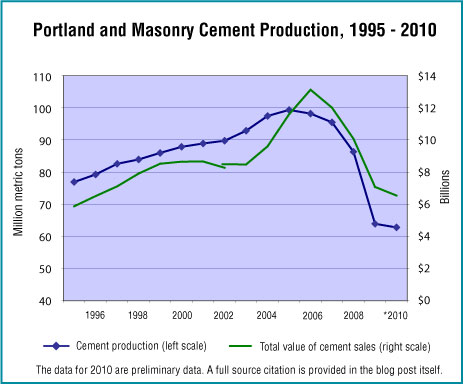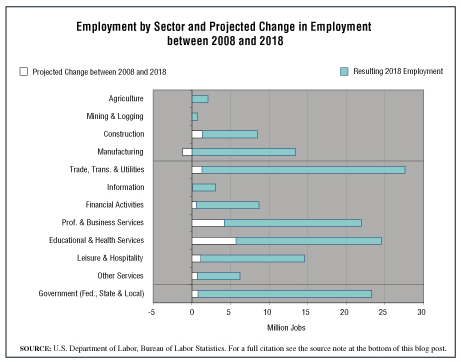A decade plus worth of production data on the cement industry shows a pattern with which we are familiar, the build-up and crash of the housing market. Most of the construction materials industries have seen similar patterns of growth and decline in the 2000s. Early data on 2010 show that sales of cement in that year reached a 27 year low, falling 45% (59 million metric tons) off the high reached in 2005.
The market size presented below is the number of metric tons of portland and masonry cement produced in the United States in 2010 and the approximate value of that cement if shipped from the mill the same year.
Geographic reference: United States
Year: 2010
Market size: 62.8 million metric tons with an approximate value of $5.7 billion
Source: “Cement,” part of an annual series titled Mineral Commodities Summaries, published by the U.S. Geographical Survey and available online here.
Original Source: U.S. Department of the Interior, USGS


